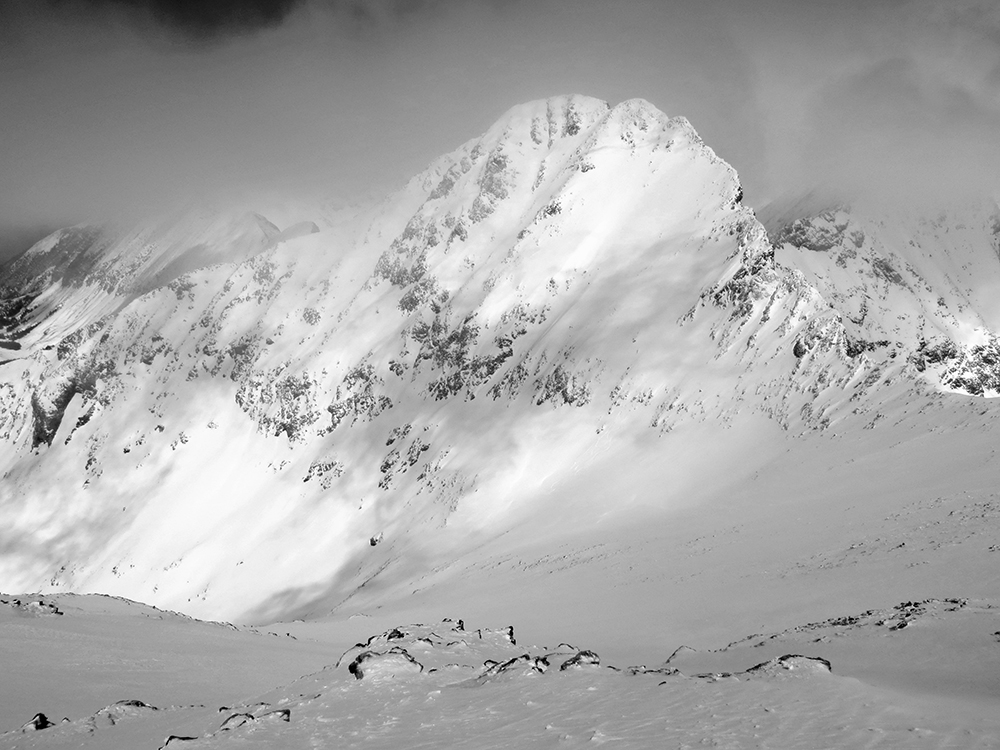This guide is intended to help those who already have experience climbing 14ers and are interested in doing so in winter months. If you haven't hiked/climbed a bunch of 14ers, please don't start by doing so in winter.
Winter

The difference between hiking Colorado's 14ers in summer and winter is wider than the San Luis Valley. The beauty of the snow-capped mountains and reward of a successful winter summit are unbeatable but it requires the use of specific equipment, a keen sense of route finding and a whole lot of determination. Your mountaineering skills and endurance will be challenged on every snowy hike. If you truly love the 14ers, there really is no better way to enjoy them than with a crowdless summit on a blue-bird weather day in the middle of winter.
The number of people hiking Winter 14ers is minimal compared to summer. In recent years, those winter numbers have been increasing but most of these new winter hikers are going for the easier peaks. And in winter, like summer, the numbers are even smaller on Colorado's 13ers and other high peaks.
What is Winter?
For most people, "winter" in the mountains begins with the first snowfall and lasts until the spring thaw is nearly complete. But when mountaineers discuss climbing peaks in winter, it either means meteorological winter or calendar winter. Here on 14ers.com, calendar winter is the norm. Calendar winter in the northern hemisphere is from the winter solstice, usually around December 20/21, to the spring equinox, around March 19/20, though those dates can change by a day or two every year.
Coloradans know that heavy spring snows can bring more snow than in the true winter months. Fall snow storms can also dump plenty of powder in the hills. Yes, these are wintery conditions, but not true winter. Fall, winter or spring means traveling in snow and cold temperatures.
Though most of my winter ascents between 1988 and 2006 were 13ers accomplished in pursuit of another goal, there were several 14er summits that were repeated on a regular basis. I enjoyed climbing and re-climbing Grays, Torreys, Bierstadt, Quandary, Lincoln, Bross, Culebra and Elbert many times over those years. I climbed Lincoln and Bross almost every year, but I climbed each of the others at least three times in those days. However, at the time, my other goal of climbing all the ranked and unranked 13ers fogged the view of any concurrent winter goals.
After finishing Colorado's ranked 13ers, I heard about Chris Davenport's one-year 14er ski project, and I began to consider climbing all the ranked and unranked 14ers between the winter solstice and the vernal equinox. At first, I simply re-defined my paradigm about the length of a winter daytrip. I figured out that a winter climb can take longer than ten hours and it is OK to begin and end in the dark. I quickly added most of the Sawatch Range and Mt. Democrat. Next, it was necessary to improve my winter stamina, camping skills, and technical skills. Toward the end, 24hour + "day hikes" or lengthy, solo winter backpack trips moved from the realm of impossible to "I can do that." Steve Gladbach
Steve's Mt. Evans Winter-Finisher Trip Report - February, 2011



